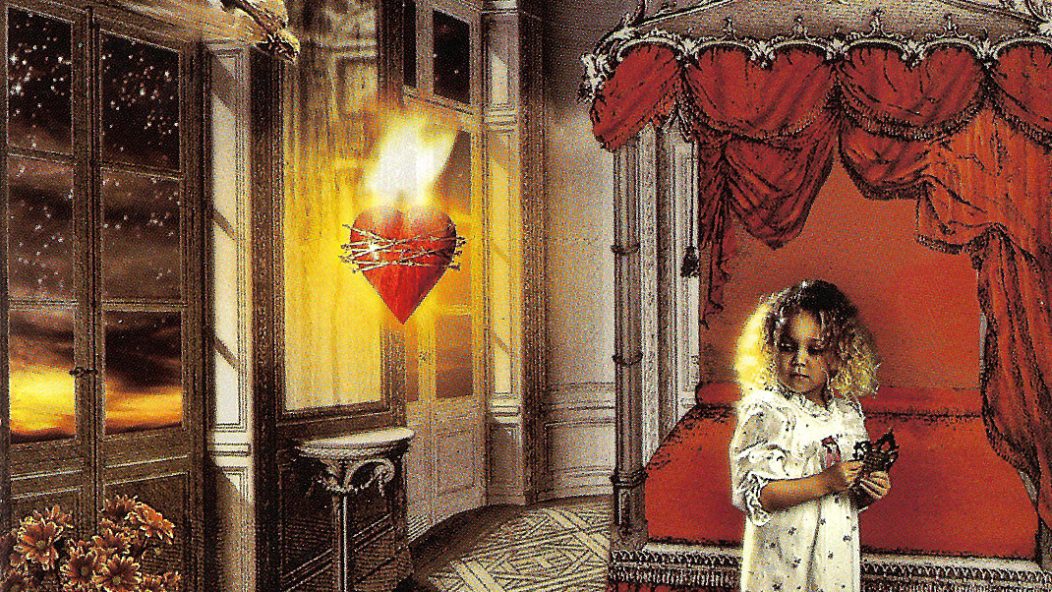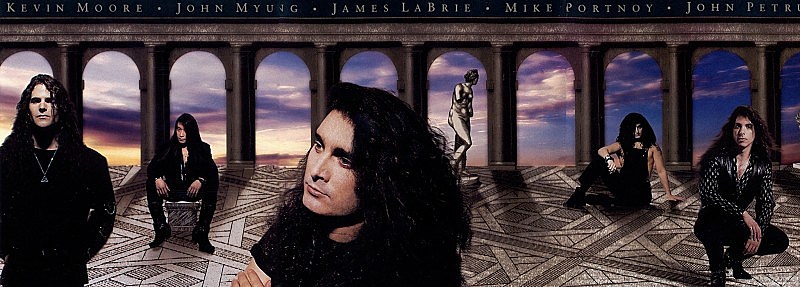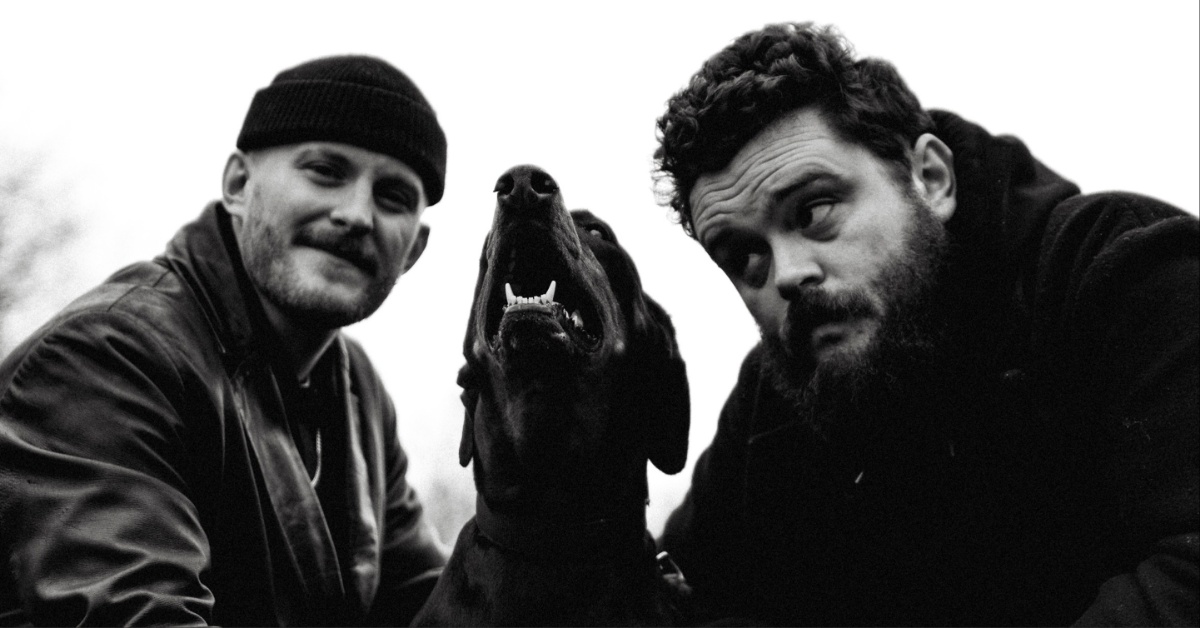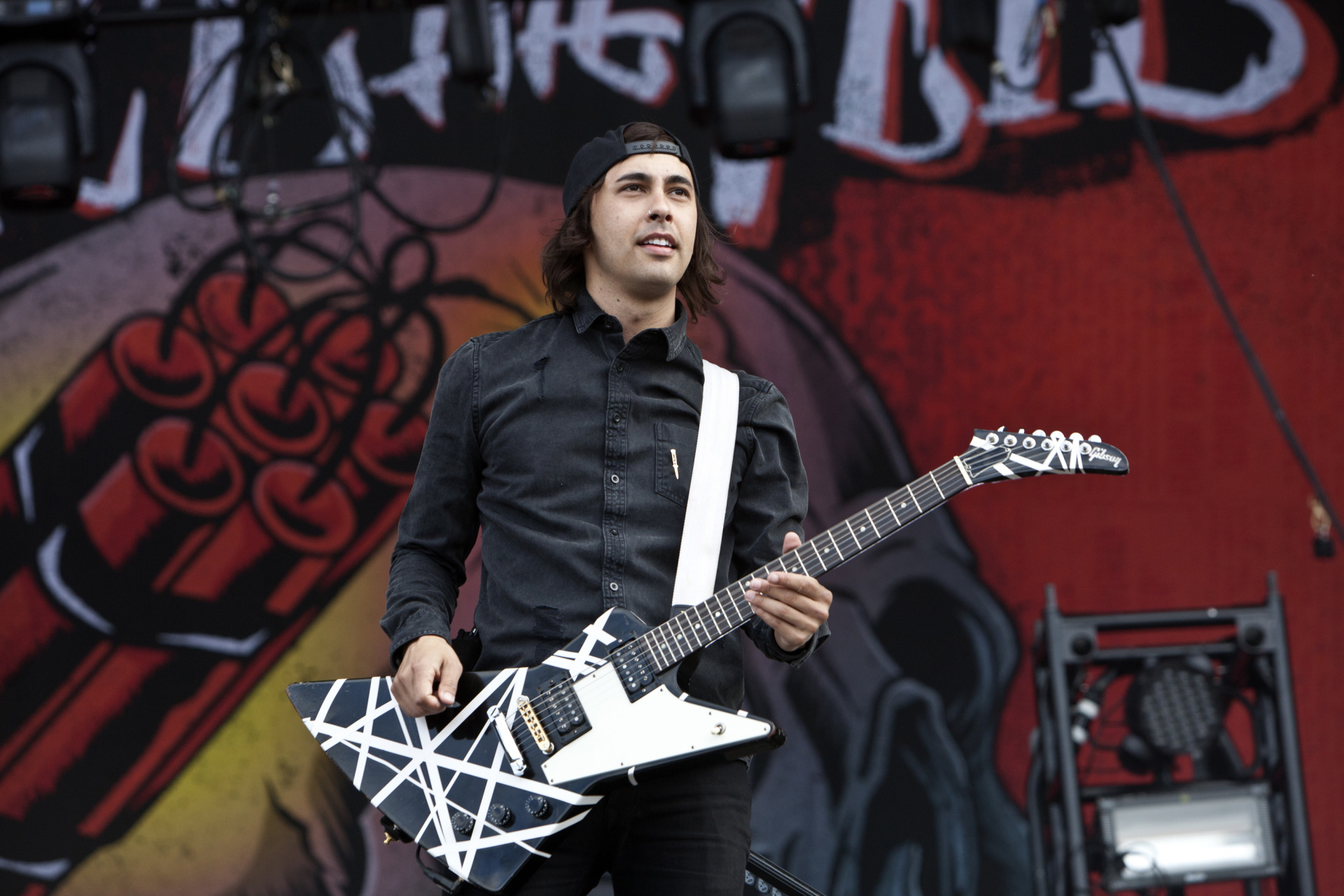
Dream Theater's "Images & Words" Turns 25
…
Images & Words, the breakthrough sophomore release from long-running progressive metal act Dream Theater, turns 25 today. For a certain percentage of incoming Berklee College Of Music students it’s practically the bible. For another percentage of metalheads it’s unlistenable cornball dreck. It’s at once an undeniable part of metal history, a foundational influence on more prog metal bands than we have time to list, and a stylistic outlier. I can’t think of a better way to breakdown the record’s legacy then in a needlessly complicated article that changes structure halfway through. Here are five and eight thoughts on Dream Theater’s most essential release.
1 – Before we dig too much deeper, let’s get this out of the way: this snare drum sound is ridiculous. No drum actually sounds like this, in any room, anywhere on earth. It’s what a political cartoon about 80s production would sound like. The drum mix on Images & Words represents a fundamental misunderstanding of what drummer Mike Portnoy does. This gated reverb effect is great for wide open mid tempo grooves and awful for fancy, high speed fills. Guess what Mike Portnoy happens to do a lot of on this record. Any time he starts pushing against the rest of the band, that soggy snare sound crowds out everything else in the arrangement. The remixes of “Pull Me Under”, “Another Day”, & “Take The Time” that show up on Greatest Hit, Dream Theater’s uncharacteristically self-aware Best Of compilation, solve the problem by replacing the enormous 80’s snare with a much less conspicuous thwack. Of course, the remixes also suffer from severe mid-00s over compression and sound dry as hell compared to the magic sparkle of the original mix, but hey, can’t win ‘em all.
2 – James LaBrie is the Penny Hardaway of metal vocalists. Whether or not you happen to be a fan of the tone his vocals, on a purely technical level his performance on Images & Words is nuts. The climb at the end of “Learning To Live” and the high-flying second verse of “Take The Time” are feats of vocal acrobatics that Charlie Dominici, the vocalist on Dream Theater’s debut, simply wasn’t capable of pulling off. Dominici was a fine singer, mind you, clear as a bell and charming in the way a lot of 80’s prog metal vocalists were, but Dream Theater don’t care about charming. They care about perfection, and for a short time LaBrie was able to give that to them until a bad case of food poisoning wrecked his throat. Since then we’ve been treated to a decade plus of bad Dave Mustaine impressions and less than successful attempts to reach his former glory. Penny Hardaway will always have the ‘95 Finals before his knees gave out, and LaBrie will always have that Napalm Death shirt.
…
…
3 – “Pull Me Under” is such a strange fucking fluke of a hit. Well, “hit” is being charitable. The song peaked on the rock charts in 1992 at no.10. That’s nothing to sneeze at, especially for a band whose music is so antithetical to radio play, but let’s not act like “Pull Me Under” was some kind of “song of the summer” world beater. Sometimes I wonder if “Pull Me Under”’s modest success was the worst thing that could have happened to Dream Theater. It may have opened the doors to a long career, but it also gave the band’s label expectations for future chart success that they had no chance of reaching. If there’s no “Pull Me Under” then maybe there’s no “You Not Me”.
4 – Well, maybe. After the fairly straight ahead blend of progressive rock and melodic heavy metal on When Day And Dream Unite, Images & Words began the time honored tradition of Dream Theater adjusting to the sounds of popular music several years too late. Smooth jazz saxophone on “Another Day”, faux-U2 guitar leads on “Surrounded”, a stiff necked attempt at funk rock on “Take The Time”. Listening back to those songs now, those bits sound like earnest miscalculations (except for the “Surrounded” lead. That shit rules), the same kind that would lead the band to ape Muse and Evanescence a decade later.
5 – The album is secretly saved by not having “Change Of Seasons” on it. The side-long epic was originally conceived as the closing track to Images & Words, because why hold back? Simple. Every single Dream Theater album after this one is too long by a solid 15 minutes at least. “Change Of Seasons” rules, but would have been overkill after “Learning To Live”. By separating the two, “Change Of Seasons” gets to be a terrific standalone song, and Images & Words stays under an hour.
…

…
1 – Images & Words is an albatross for Dream Theater. As the purest representation of their sound, each successive release gets compared to it. It’s the template, and anything that varies that template by going heavier (Awake, Train of Thought) proggier (Scenes From A Memory) or poppier (Falling Into Infinity, Octavarium) will upset some portion of Dream Theater fans. Even when the band get as close as humanly possible to recreating the magic of Images & Words, like they did on 2011’s A Dramatic Turn Of Events, their fans end up doing shit like this.
2. A big reason that Images & Words remains in such esteem for Dream Theater fans is it’s high concentration of irreplicable circumstances and creative roads which the band would rarely travel down again. The slightest differences here take on a mythic quality. For example, “Learning To Live” would be a classic Dream Theater song even without bassist John Myung’s roaming lyrical style, but his lack of contributions after the early phase of the band’s career gives it an extra sheen of novelty. It’s the wrong detail to focus on, but it served as useful shorthand for fans wishing that the band could get two bottles full of lightning.
3. John Petrucci’s lyrics are another story. Petrucci has done a terrific job of demystifying himself since 1992. Not that he was some great wordsmith on this record, “Under A Glass Moon” is pure fanciful gobbledygook. However, gobbledygook is vastly preferable to the kind of boneheaded literalism that led Petrucci to write songs like “The Count Of Tuscany”. Not just because Petrucci’s modern approach to lyrics is clunky and unmusical, but because fanciful gobbledygook is EXACTLY what Dream Theater’s music sounds like. I have no idea what “Bathing your soul in silver tears/Beneath a blackened summer sky” means, but I know it’s a perfect fit to Petrucci’s liquid metal lead tone.
…
…
4. I just want to briefly note that Petrucci’s signature Ibanez guitar, the one he used before switching to Music Man, bears an eerie resemblence to both Kevin Durant’s 2016 all star shoe and Dakis Joannou’s yacht The Guilty, designed by Jeff Koons. Clearly this is some illuminati shit.
5. Ok, one last thought about Petrucci and then we’ll move on. Part of what makes Petrucci’s playing so brilliant here is how he synthesizes two unrelated styles into something recognizably his own. In the simplest terms, he’s part Alex Lifeson part James Hetfield, but would never be confused with either for a second. What people tend to notice first is his absolutely absurd lead playing, but the way Petrucci manages his rhythm is far more fascinating. In a band where keys are mostly ornamental, bass guitar largely timbral, and where drums play against the pulse of the music just as often as they establish that pulse, Petrucci’s rhythm playing is the anchor.
6. Petrucci would later find a worthy sparring partner in Jordan Rudess, the band’s current Juilliard trained keyboardist, but on Images & Words the ivories were handled by Kevin Moore. Moore is another mythic element in the first act of Dream Theater’s career. Because he left the band prior to the uninspired Falling Into Infinity, it’s easy to see him as a missing ingredient which keeps the band from recapturing their glory days. This is a little unfair to Rudess, who can write some very stirring piano parts when he’s not trapped in clown town, but it is difficult to image Dream Theater pulling off something as simple and plainly human as “Waiting For Sleep” without Moore in their ranks.
7. There’s a case to be made that “Surrounded” stands alone in the Dream Theater discography. It has hardly any metal in it at all, but it isn’t a ballad or a conventional pop song either. The song isn’t up front about its technicality, almost all of the time manipulation happens under the hood of an effortless vocal melody. “Surrounded” is about as close as Dream Theater have ever come to being a pure progressive rock act, but it isn’t a pastiche of the genre’s classics either. Even stranger, they’ve almost never tried to tap into the bubbly major key vibe that makes up the bulk of this track without consciously aping another style as well.
8. Here is a chicken and egg question about “Metropolis Part One: The Miracle And The Sleeper”: Is it the most essential Dream Theater song because it sums up everything you need to know about the band, or did Dream Theater mold the rest of their catalog after it because they knew they had written their signature song? Clearly they know how integral it is to their body of work since they routinely close with it live and devoted an entire album (Scenes From A Memory in 1999) to paying off its motives. But what sets “Metropolis” apart from the countless songs that follow followed in it’s wake? Why is this particular instrumental freak out so much more fun? I don’t think the answer is necessarily in the composition itself, at least not on a theoretical level. The key difference is that on Images & Words Dream Theater were still probing for the limits of their abilities. “Metropolis” is the product of five musicians learning just how far they could push each other. The song is overflowing with the joy of creation, not replication. You can’t reverse engineer that discovery. You can only learn to fly once, and here Dream Theater soared.
…
…










